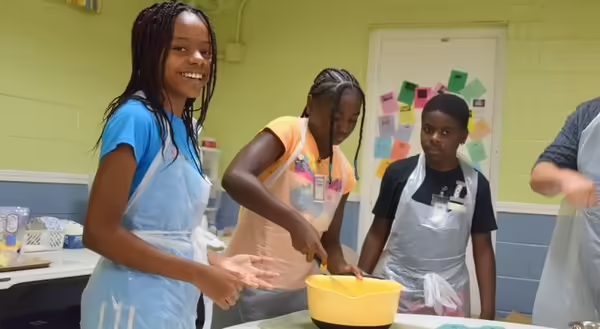
Illinois SNAP-Education, delivered through the Eat.Move.Save. program, continues to improve the health of families across the state—and right here in Fulton, Mason, Peoria and Tazewell counties. With a focus on nutrition education, healthy living, and community partnerships, the program is helping thousands take steps toward better health.
During the 2023-2024 program year, 7,074 individuals participated in SNAP-Ed programs in the four-county unit. Youth made up over 93% of participants and the audience reflected strong racial and ethnic diversity. Instructors provided over 1,400 hours of direct education through 2,174 sessions, and SNAP-Ed teams reached 11,191 more people through booths at events.
These efforts are backed by strong partnerships—238 unique partners and over 20 community coalitions—that drive lasting changes to food access and health policies. Locally, 161 policy, systems, and environmental changes were adopted, improving health for residents through an estimated 199,000 potential impacts. The local SNAP-Ed program also helped bring in $28,000 in donations and small grant awards to support food pantries, gardens, and coalition activities in these counties.
“SNAP-Ed is more than just nutrition classes,” said Rebecca Crumrine, SNAP-Ed educator. “It’s about building strong partnerships and giving families the tools they need to make healthier choices that last a lifetime. We’re proud of the impact we make every day across our local communities.”
Statewide, SNAP-Ed's value is clear. Recently, a statewide evaluation showed that more than one in four SNAP-eligible residents in priority communities received SNAP-Ed services. Nearly 60% of those participants reported taking action, like eating more fruits and vegetables or becoming more physically active. A companion media campaign reached 1 in 5 residents, with two-thirds of them making healthier choices after seeing the messages.
This evaluation also showed one year of SNAP-Ed programming is estimated to prevent over 5,000 obesity cases and 570 food insecurity cases, saving up to $135 million in future health and economic costs. That’s a return on investment up to $9.54 for every $1 dollar invested.
From local classrooms to community coalitions, SNAP-Ed is making it easier for families to eat well and live healthier lives—creating a ripple effect of change across Illinois.
Learn more about the impact of the SNAP-Ed program online at extension.illinois.edu/global/snap-education-impact.
PHOTO CAPTION
Youth represent 93% of participants in the local SNAP-Education programming. Data collected during the 2023-2024 program year shows 7,074 individuals participated in programs, plus and estimated 199,000 residents were impacted by policy, systems, and environmental changes.
MEET THE AUTHOR
Rebecca Crumrine joined the Supplemental Nutrition Assistance Program (SNAP)-Education team in October of 2017. Rebecca moved into the SNAP-Education Program Coordinator position in January of 2019 with unit-wide responsibilities and unit educator in December 2022. These roles come with the ability to expand her positive impact through work that helps improve the policies, systems, and environments that influence healthy eating and physical activity. Rebecca collaborates with partners such as food pantries, schools, and health departments. Her work helps to impact families where they eat, learn, live, shop, and play so the healthier choice can become the easier choice to make.
ABOUT EXTENSION SNAPSHOTS
Extension Snapshots are monthly impact reports that share the stories of our programs in Fulton, Mason, Peoria, and Tazewell counties. To have them delivered to you directly sign up using our E-blast registration.